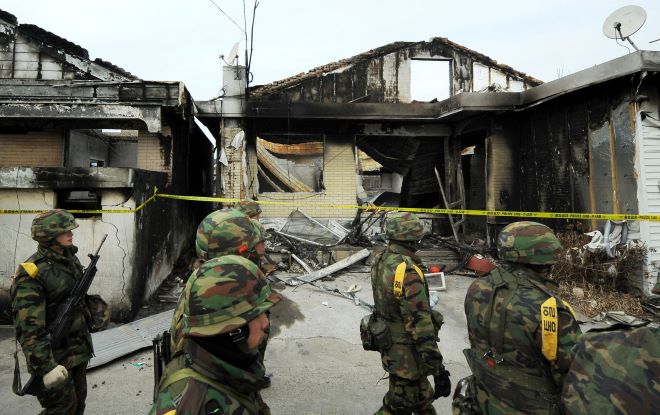
This photo, carried by North Korea’s official Korean Central News Agency on Jan. 25, 2024, shows the North’s first test-firing of the new strategic cruise missile Pulhwasal-3-31 the previous day. (For Use Only in the Republic of Korea. No Redistribution) (Yonhap)
SEOUL, Jan. 27 (Korea Bizwire) –Recent statements from private U.S. experts and U.S. government officials indicate a growing concern over the possibility of North Korea launching a significant attack against South Korea within months.
According to a New York Times report from January 25, anonymous U.S. government sources stated that North Korea’s recent missile tests and Kim Jong Un’s statements suggest an escalation beyond the usual pattern of pressuring South Korea. However, they clarified that there are no imminent signs of a full-scale war.
These sources referenced the 2010 Yeonpyeong Island shelling, noting that although South Korea retaliated, the situation was quickly resolved. They believe Kim Jong Un might think limited military provocations can be controlled.
One official mentioned North Korea’s artillery and missile supply to Russia, indicating no long-term war plans.
Amid these concerns, Jon Finer, Deputy National Security Adviser at the White House, spoke at the Asia Society Forum, commenting that North Korea has chosen a highly negative path.
Daniel Russel, former Assistant Secretary of State for East Asian and Pacific Affairs, also expressed alarm, suggesting the possibility of North Korea planning a more significant attack than the Yeonpyeong shelling.
Kim Jong Un’s recent statements, including his Supreme People’s Assembly speech on January 15, emphasized the need to prepare for war scenarios on the Korean Peninsula, potentially incorporating South Korea into North Korea’s territory, and declaring South Korea as a primary and immutable enemy in their constitution.
Additionally, North Korea’s recent announcement of a new strategic cruise missile test, the Bulhwasal-3-31, adds to the growing tensions.
On January 11, U.S. experts on North Korea, including Robert Carlin from the Middlebury Institute of International Studies and Dr. Siegfried Hecker, warned in a joint article for the “38 North” publication about the precarious situation on the Korean Peninsula, stating it is more dangerous than any time since early June 1950.
Hecker also noted that North Korea possesses enough fissile material to create 50-60 nuclear warheads, mainly enriched uranium. They believe Kim Jong Un may have strategically decided to wage war, as his grandfather did in 1950.
John Kirby, the National Security Council Coordinator for Strategic Communications, has also taken Kim’s nuclear and war threats against South Korea and the U.S. seriously, noting the continuous enhancement of North Korea’s military capabilities, including nuclear weapons.
The former U.S. special envoy for North Korean nuclear affairs, Robert Gallucci, also highlighted the possibility of a nuclear war in Northeast Asia this year in his contribution to “The National Interest.”
He suggested that North Korea might use nuclear threats to support China over Taiwan issues or independently consider nuclear attacks against South Korea.
M. H. Lee (mhlee@koreabizwire.com)







